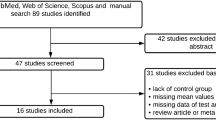Abstract
Mechanical stretching of connective tissue occurs with normal movement and postural changes, as well as treatments including physical therapy, massage and acupuncture. Connective tissue fibroblasts were recently shown to respond actively to short-term mechanical stretch (minutes to hours) with reversible cytoskeletal remodeling, characterized by extensive cell spreading and lamellipodia formation. In this study, we have examined the effect of tissue stretch on the distribution of α- and β-actin in subcutaneous tissue fibroblasts ex vivo. Normal fibroblasts uniformly exhibited α-smooth muscle actin (α-SMA) immunoreactivity. Unlike cultured fibroblasts and smooth muscle cells, α-SMA in these fibroblasts was not in F-actin form (indicated by lack of phalloidin co-localization) nor was it organized into distinct stress fibers. The lack of stress fibers and fibronexus was confirmed by electron microscopy, indicating that these cells were not myofibroblasts. In unstretched tissue, the pattern of α-actin was diffuse and granular. With tissue stretch (30 min), α-actin formed a star-shaped pattern centered on the nucleus, while β-actin extended throughout the cytoplasm including lamellipodia and cell cortex. This dual response pattern of α- and β-actin may be an important component of cellular mechanotransduction mechanisms relevant to physiologic and therapeutic mechanical forces applied to connective tissue.






Similar content being viewed by others
References
Abdullah AM, Nazer H, Atiyeh M, Ali MA (1991) Congenital hepatic fibrosis in Saudi Arabia. J Trop Pediatr 37:240–243
Absher PM, Schneider DJ, Baldor LC, Russell JC, Sobel BE (1997) Increased proliferation of explanted vascular smooth muscle cells: a marker presaging atherogenesis. Atherosclerosis 131:187–194
Brown RA, Talas G, Porter RA, McGrouther DA, Eastwood M (1996) Balanced mechanical forces and microtubule contribution to fibroblast contraction. J Cell Physiol 169:439–447
Darby I, Skalli O, Gabbiani G (1990) Alpha-smooth muscle actin is transiently expressed by myofibroblasts during experimental wound healing. Lab Invest 63:21–29
Desmouliere A, Geinoz A, Gabbiani F, Gabbiani G (1993) Transforming growth factor-beta 1 induces alpha-smooth muscle actin expression in granulation tissue myofibroblasts and in quiescent and growing cultured fibroblasts. J Cell Biol 122:103–111
Ehrlich HP, Keefer KA, Myers RL, Passaniti A (1999) Vanadate and the absence of myofibroblasts in wound contraction. Arch Surg 134:494–501
Eyden B (2001) The myofibroblast: an assessment of controversial issues and a definition useful in diagnosis and research. Ultrastruct Pathol 25:39–50
Gabbiani G (2003) The myofibroblast in wound healing and fibrocontractive diseases. J Pathol 200:500–503
Gabbiani G, Ryan GB, Lamelin JP, Vassalli P, Majno G, Bouvier CA, Cruchaud A, Luscher EF (1973) Human smooth muscle autoantibody. Its identification as antiactin antibody and a study of its binding to “nonmuscular” cells. Am J Pathol 72:473–488
Gabbiani G, Chaponnier C, Huttner I (1978) Cytoplasmic filaments and gap junctions in epithelial cells and myofibroblasts during wound healing. J Cell Biol 76:561–568
Herman IM (1993) Actin isoforms. Curr Opin Cell Biol 5:48–55
Hinz B, Celetta G, Tomasek JJ, Gabbiani G, Chaponnier C (2001) Alpha-smooth muscle actin expression upregulates fibroblast contractile activity. Mol Biol Cell 12:2730–2741
Iatridis JC, Wu J, Yandow JA, Langevin HM (2003) Subcutaneous tissue mechanical behavior is linear and viscoelastic under uniaxial tension. Connect Tissue Res 44:208–217
Langevin HM, Cornbrooks CJ, Taatjes DJ (2004) Fibroblasts form a body-wide cellular network. Histochem Cell Biol 122:7–15
Langevin HM, Bouffard NA, Badger GJ, Iatridis JC, Howe AK (2005) Dynamic fibroblast cytoskeletal response to subcutaneous tissue stretch ex vivo and in vivo. Am J Physiol Cell Physiol 288:C747–756
Langevin HM, Bouffard NA, Badger GJ, Churchill DL, Howe AK (2006) Subcutaneous tissue fibroblast cytoskeletal remodeling induced by acupuncture: evidence for a mechanotransduction-based mechanism. J Cell Physiol (in press)
Majno G, Gabbiani G, Hirschel BJ, Ryan GB, Statkov PR (1971) Contraction of granulation tissue in vitro: similarity to smooth muscle. Science 173:548–550
Roth J, Taatjes DJ (1998) Tubules of the trans Golgi apparatus visualized by immunoelectron microscopy. Histochem Cell Biol 109:545–553
Ryan GB, Cliff WJ, Gabbiani G, Irle C, Montandon D, Statkov PR, Majno G (1974) Myofibroblasts in human granulation tissue. Hum Pathol 5:55–67
Singer II (1979) The fibronexus: a transmembrane association of fibronectin-containing fibers and bundles of 5 nm microfilaments in hamster and human fibroblasts. Cell 16:675–685
Skalli O, Ropraz P, Trzeciak A, Benzonana G, Gillessen D, Gabbiani G (1986) A monoclonal antibody against alpha-smooth muscle actin: a new probe for smooth muscle differentiation. J Cell Biol 103:2787–2796
Small JV (1988) The actin cytoskeleton. Electron Microsc Rev 1:155–174
Spector M (2001) Musculoskeletal connective tissue cells with muscle: expression of muscle actin in and contraction of fibroblasts, chondrocytes, and osteoblasts. Wound Repair Regen 9:11–18
Tomasek JJ, Gabbiani G, Hinz B, Chaponnier C, Brown RA (2002) Myofibroblasts and mechano-regulation of connective tissue remodelling. Nat Rev Mol Cell Biol 3:349–363
Acknowledgements
The authors thank Dr. Christine Chaponnier for the generous gift of antibodies and α-SMA peptide, as well as many helpful discussions, Drs. David Schneider and Robert Kelm for the kind gift of SMCs, Nicole Bishop and Heidi Taatjes for technical assistance, as well as Nicole A. Bouffard for help with manuscript preparation. We also thank Drs. Guido Majno, Isabelle Joris and Robert Kelm for their insight and advice. This work was funded in part by the NIH Center for Complementary and Alternative Medicine Research Grant RO1-AT01121 and by NIH Grant P20 RR16435 from the COBRE Program of the National Center for Research Resources. Its content is solely the responsibility of the authors and do not necessarily represent the official views of the National Institutes of Health.
Author information
Authors and Affiliations
Corresponding author
Rights and permissions
About this article
Cite this article
Langevin, H.M., Storch, K.N., Cipolla, M.J. et al. Fibroblast spreading induced by connective tissue stretch involves intracellular redistribution of α- and β-actin. Histochem Cell Biol 125, 487–495 (2006). https://doi.org/10.1007/s00418-005-0138-1
Accepted:
Published:
Issue Date:
DOI: https://doi.org/10.1007/s00418-005-0138-1




